All eyes on Cinemalaya
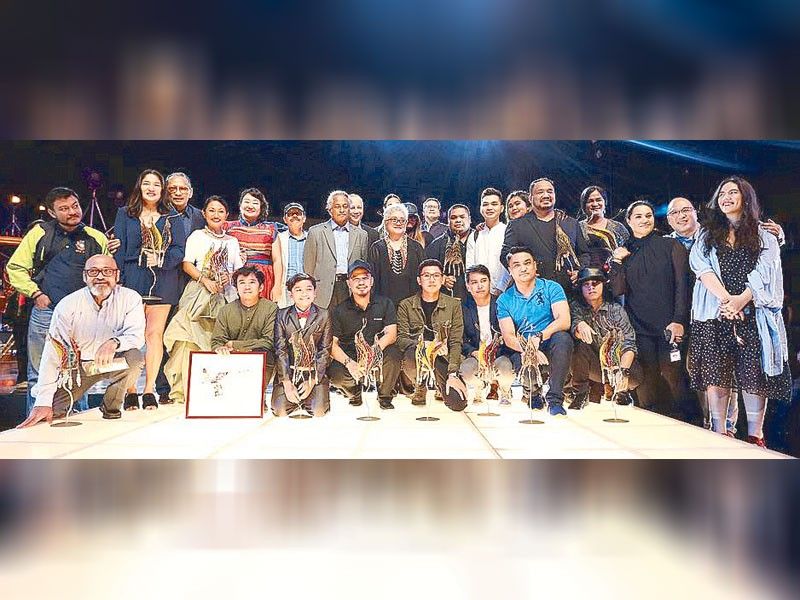
MANILA, Philippines — When I joined Cinemalaya with my film K’na the Dreamweaver in 2014, I had zero background in filmmaking. Jumping into filmmaking with blind ambition, I had no idea how much it would change my life. Through the years, Cinemalaya has changed the lives of dozens of filmmakers, many who, like me, got their big break with the festival. It has let us realize our visions, no matter how hazy they may be. This year’s 15th edition is no different.
Receiving the Nikkei Asia Prize for Culture and Community earlier this year, Cinemalaya Foundation Inc. started 2019 with even more reason to celebrate its milestone 15th year.

Mel Chionglo, Laurice Guillen, Antonio Cojuangco and Chris Millado receive the Nikkei Asia Prize in behalf of the Cinemalaya Foundation
The prestigious international prize cited Cinemalaya’s efforts to “shed a new light on the country’s film industry, which had been viewed as dead following a huge decline in production.” The Nikkei Asia Prize is given to individuals and groups in Asia that contribute to the region’s sustainable development and help create a better future for Asia.
The international award is well-deserved for the foundation that has, for 15 years, been instrumental in helping Filipino filmmakers gain recognition abroad.
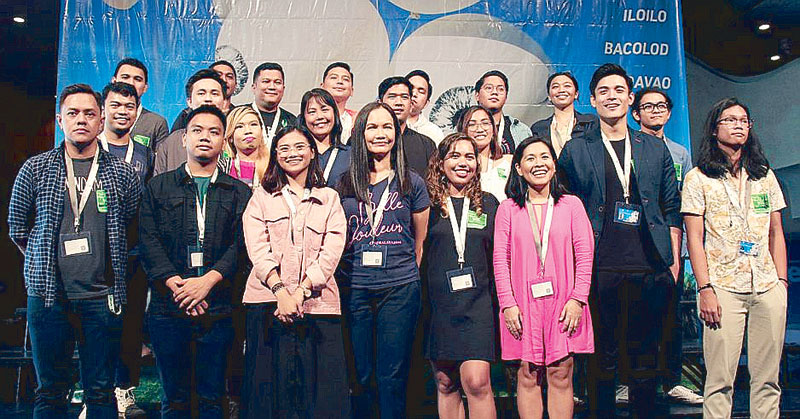
The new batch of hopefuls – the feature and short filmmakers for Cinemalaya 2019.
“I was overjoyed to hear that the Nikkei Asia Prize was giving the Community and Culture Award to Cinemalaya Foundation. It is an honor, and I consider it an affirmation and reward for the vision and work of all the Cinemalaya stakeholders these past 15 years,” says Cinemalaya president Laurice Guillen.
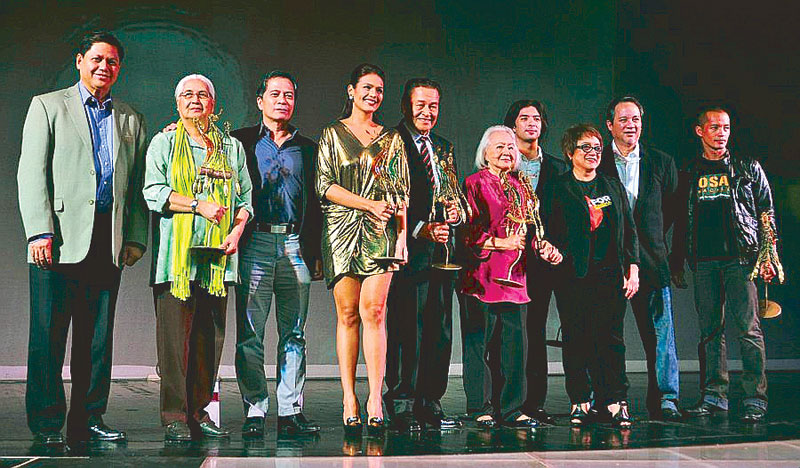
Winning actors of Cinemalaya 2012 include Ama Quiambao, Iza Calzado, Eddie Garcia, Anita Linda, Joross Gamboa and Art Acuña.
Cinemalaya festival director Chris Millado says receiving the recognition is inspiring. “As a festival organizer, as one who’s been a member of a whole team that has worked and toiled on it for so many years, it’s an affirmation of the work that we do. Which is very inspiring for people like us in the backside of the work.”
He adds, since Nikkei is a business paper, recognizing a film festival is a wonderful gesture. “Practically, it almost says in a way that Cinemalaya is doing things that is not only in the realm of artistry but practically makes way to the realm of the economy.”
The festival director hopes the award will also encourage local businesses to support festivals like Cinemalaya.
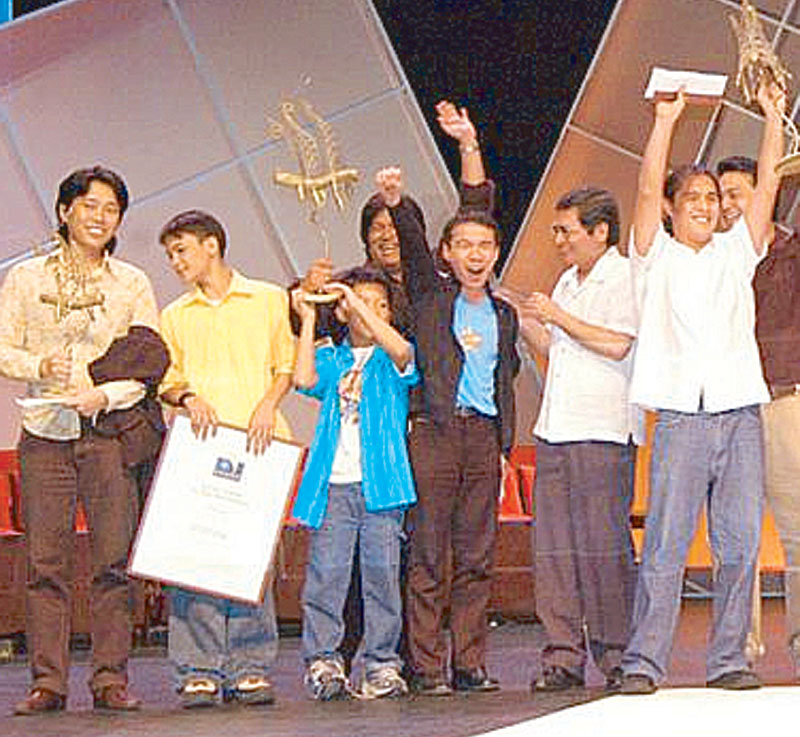
The very first winners of Cinemalaya in 2004 include Ang Pagdadalaga ni Maximo Oliveros (Special Jury Prize) and Pepot Artista (Best Film).
Cinemalaya Foundation chairman Antonio Cojuangco is a prime example of how businessmen can make a difference in arts and culture. Conceptualizing the festival and supporting it since its inception, Cojuangco gave the acceptance speech during the Nikkei awarding ceremony in Japan.
Cojuangco said the award “affirms the creative power that can be unleashed by the collaboration between private business, government agencies and cultural centers.”
He added, “This recognition also helps to bring awareness of our movies to global audiences and since Cinemalaya includes the exhibition of films from other countries, it is our hope that this builds bridges of empathy across cultures. In this age of fake news and the weaponizing of social media, we offer our festival as an alternative space for truth telling.”

Eddie Garcia won Best Actor in Cinemalaya three times – first for ICU Bed #7 in 2004, then in 2012 for Bwakaw and last year for his role in ML.
Millado says the grant awarded by Nikkei will be used for new programs for Cinemalaya, “especially, the education and development of new content for Cinemalaya.”
In the 15th Cinemalaya Film Festival, ongoing until Aug. 13, ten more filmmakers join the ranks with another wide variety of feature films in competition: Iska by Theodore Boborol; John Denver Trending by Arden Rod Condez; ANi by Kim Zuñiga and Sandro del Rosario; Belle Douleur by Joji Alonso; Malamaya by Danica Sta. Lucia and Leilani Chavez; Children of the River by Maricel Cariaga; Edward by Thop Nazareno; Pandanggo sa Hukay by Sheryl Rose Andes; Tabon by Xian Lim; and Fucc Bois by Eduardo Roy, Jr.
“The challenge is always trying to come up with distinctly different films either in subject matter or directorial styles every year,” says monitoring committee head Mel Chionglo, who adds with a smile, “The bigger challenge is trying to complete the projects way before the festival deadline.” He is only half-kidding.

This year, Cinemalaya eyes a larger audience nationwide.
Aside from the ten competition films, Millado points out several other reasons to celebrate in the 15th edition of Cinemalaya.
One major highlight is the Vision of Asia section, a relatively new section of the festival that brings to Filipino audiences filmmakers’ perspectives from across the continent. Among the selection of Asian films is Lying to Mom by Japanese director Katsumi Nojiri, which won at the Tokyo International Film Festival. The director will be present at the screening.
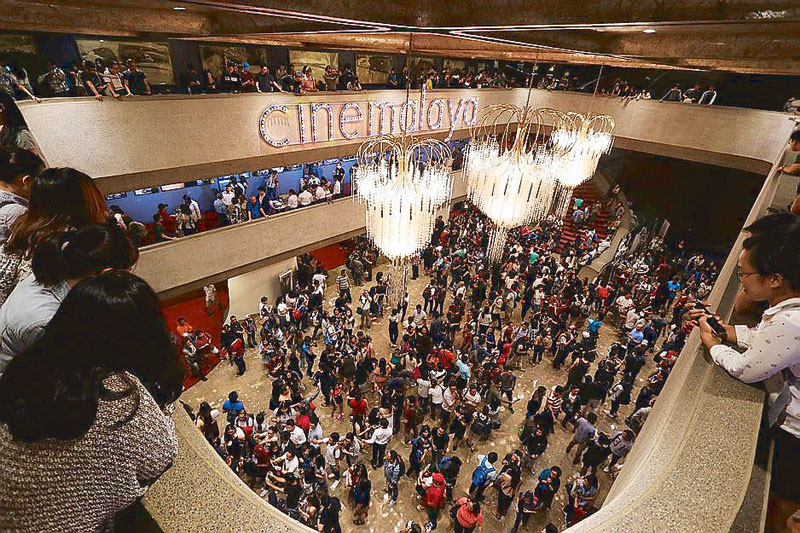
Cineastes fill the CCP main theater lobby with a lively buzz after a screening.
Another Vision of Asia selection is Still Human by Oliver Siu Kuen Chan. The film about a Filipino domestic helper stars Criselle Consunji, who won Best New Performer at the Hong Kong Film Awards. She will also be present at the screening.
Cinemalaya likewise highlights the best of other local festivals, with winning films from QCinema, Sinag Maynila, ToFarm, Cinema One, Metro Manila Film Festival and Pista ng Pelikulang Pilipino.
To celebrate the 15 years of the festival, all films from the past years will be available at viewing stations dubbed Cinemalaya on Demand.

Winners of Cinemalaya 2014.
No less than Lav Diaz’s Ang Hupa, which was selected to be part of the director’s fortnight at the Cannes Film Festival, kicked off the festival on Aug. 2, while Kerwin Go’s Mina-Anud closes the celebration this year.
“Cinemalaya has journeyed since its start many years ago and has launched the careers of many filmmakers, has changed practically the landscape of Filipino cinema and continues to do so. And, in fact, has stimulated the creation of other independent film festivals as well. Making it a really very vibrant landscape for filmmakers and audiences alike,” says Millado.
The festival has been working on expanding its accessibility nationwide. The past years have seen the films gradually gain recognition beyond the theaters of the CCP with showings in Ayala Malls and micro-cinemas across the metro. This year, Cinemalaya spreads its wings even further.
“We’ve seen the huge interest of Cinemalaya here at the center but we do see the need for it to reach the broader audiences,” says Millado. “For the last 15 years, our lives have been shaped by Cinemalaya. But we yet have to reach out to audiences in the provinces, where a lot of people haven’t heard of Cinemalaya. For this to become sustainable, it is important for Cinemalaya to start engaging with broader audiences.”
Along with Ayala Cinemas, the festival is now partners with Vista Cinemas. Micro-cinemas Cinema Centenario at Maginhawa in Quezon City, Cinema ’76 in San Juan and Anonas, the Black Maria in Ortigas, CBRC Dream Theater in España and FDCP Cinematheques in Manila, Ilo-ilo and Davao will be screening Cinemalaya films.
Aside from Metro Manila, the festival will reach new audiences in Cavite, Pampanga, Naga and Legazpi, Bacolod, Iloilo and Davao.
“We hope by next year the number – depending on the turnout in these regional venues – we would like to even increase the screens more,” says Millado.
“We’ve got the festival down for two weeks. But to extend its impact and influence outside of the festival is another field altogether. For this we’ll need the help of both government and private institutions,” he says.
“Looking back, we are basically the same group of people here today. People with diverse interest for the arts, academe, the film industry, business and government but with one common interest: nurturing the dream of Filipino films that are truly reflective of our culture. Year after year, since 2005, that dream has seen how events and changes here and worldwide are reflected in the films selected for competition. Political, environmental, social, technological upheavals find their way into the changing phase of independent films,” says Guillen.
She says, “The question is, how can these films be seen by as many Filipinos as possible? How will their messages reach the audiences as quickly as a wave of change take place? How will the films impact on humanity? These are the challenges that face us in the next five years. Keeping the artistic integrity while evolving and finding alternative distribution for alternative films. And keeping our optimism alive to keep looking ahead at where this dream will take us next.”
Millado agrees, “The challenge is how to make it sustainable. The challenge is how to engage independent film without giving up its vision of being fueled by the artist’s free imagination.”
Despite the monumental challenges of keeping up – and constantly leveling up – the festival that has now become a fixture in the lives of filmmakers and film lovers alike, Chionglo and Millado agree that it is all worth it.
“You want to try to help. You want to make some kind of impression or an impact on young filmmakers,” says Chionglo. “You want to discover talents. That’s what you want at this point in your life, in my life, in my career, at my age. You want to be able to help or find some kind of glimmer of hope for the industry and the future.”
Millado says he finds motivation in the buzz in the CCP lobby after every screening. “After the screening, when you emerge from the theater, and there’s this like wild applause ringing out inside the theater that you’ve never heard anywhere, in any cinema, that buzz that you hear from young people, talking excitedly about movies at the lobby, that is enough. When you hear that happening there, you say to yourself, all the effort that you’ve done, all the frustrations, blood, sweat and tears that go into the set-up and the implementation of this festival, is all worth it.”
As that buzz makes its way throughout the nation, more and more eyes will be on Cinemalaya as it gives audiences a glimpse of different indie filmmakers’ unique perspectives today and in the future.
For full schedule of Cinemalaya films, visit www.cinemalaya.org
- Latest
- Trending



















